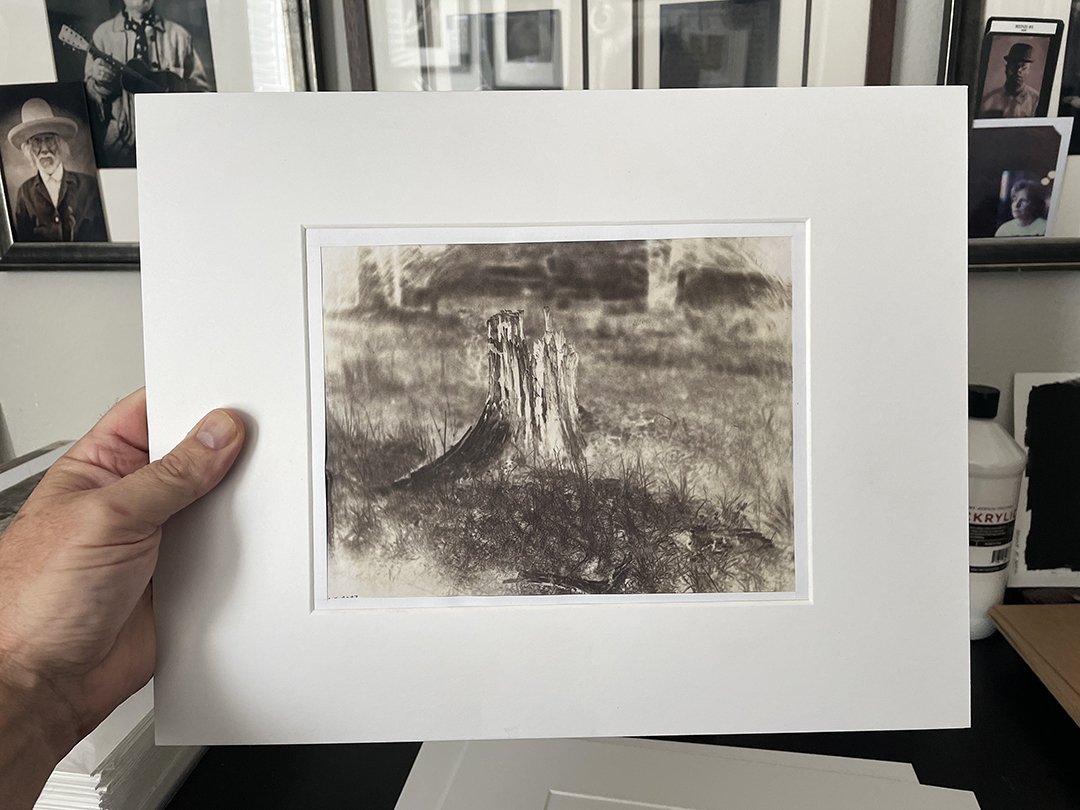I live in one of the areas where the Tabeguache tribe lived during the summer months. My photographs are about coming to terms with my relationship with the land, the people, and its history. I want to honor the people, the plants they used, the rocks, and the trees they dwelt among and used to survive and thrive for many centuries. I’ve spent time learning about the symbolism and metaphors they used and I’ve constructed photographs based on historical and contemporary uses of these ideas and beliefs.
The work is made with the 19th-century wet and dry collodion photographic processes as well as the Calotype process (paper negatives) in the Whole Plate format (6.5” x 8.5”). I used a period lens circa 1870 for the work. From the glass and paper negatives, I’ve made Palladiotype prints (Palladium), 1873, and original Kallitype prints (1889). Both are contact printing processes. It was very important for me to use period processes and period gear for these images. The processes and optics have a way of transporting the viewer to that time period (the 1840s - 1890s).
I called this body of work, “In the Shadow of Sun Mountain”. The photographs are all made with the great mountain watching over.
The Ute honored and respected this land and all of its life, never taking more than they needed. The fauna, flora, and landscape represent all that they loved. It provided the shelter, food, and medicine they survived on. Their life here was balanced and good.
Ben Mitchell, guest curator of "Edward S. Curtis: The North American Indian" said "...history is a very powerful force, because history, when you’re immersed in it, isn’t just looking at the past, history constantly informs the present you’re living in — or it better, if we’re paying attention...history also points us to our future that we’re going to share. We learn from history how to live in our present, and how to plan to live in our future.”
I can’t change the past. No one can. But my hope is that the viewers of this work will see the beauty and the tragedy. I want the photographs to reflect the memories of a better time and wrestle with the history and terrible events that followed. My goal is to put a “pebble in the viewer’s shoe”. I want them to contemplate the past, the present, and the future. I hope to inspire, motivate and create compassion and empathy for the people, the land, and all the life on it.
“Art is crucial for transforming death and pain into forms that can in some way enhance the life that remains.”
Robert Jay Lifton





















